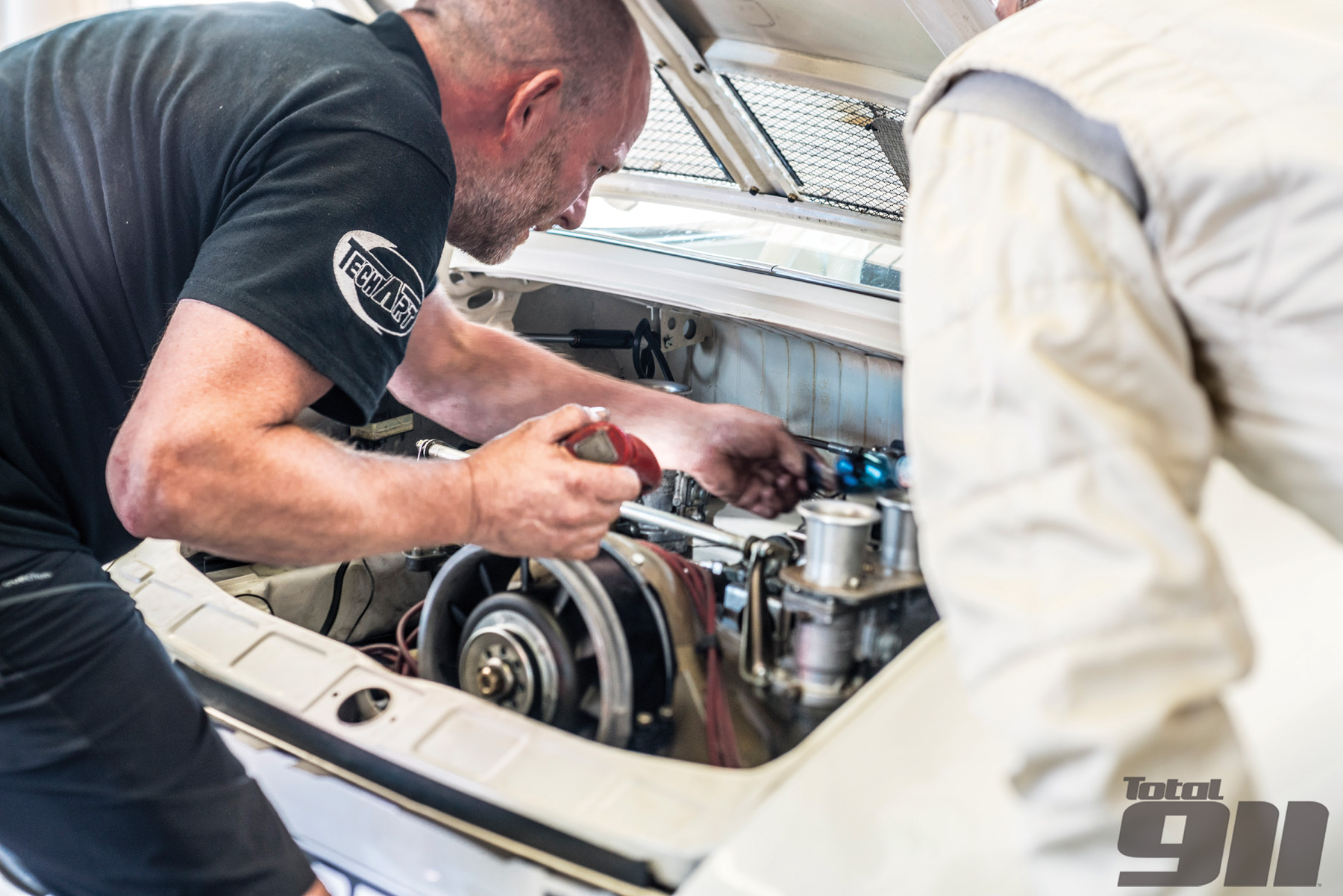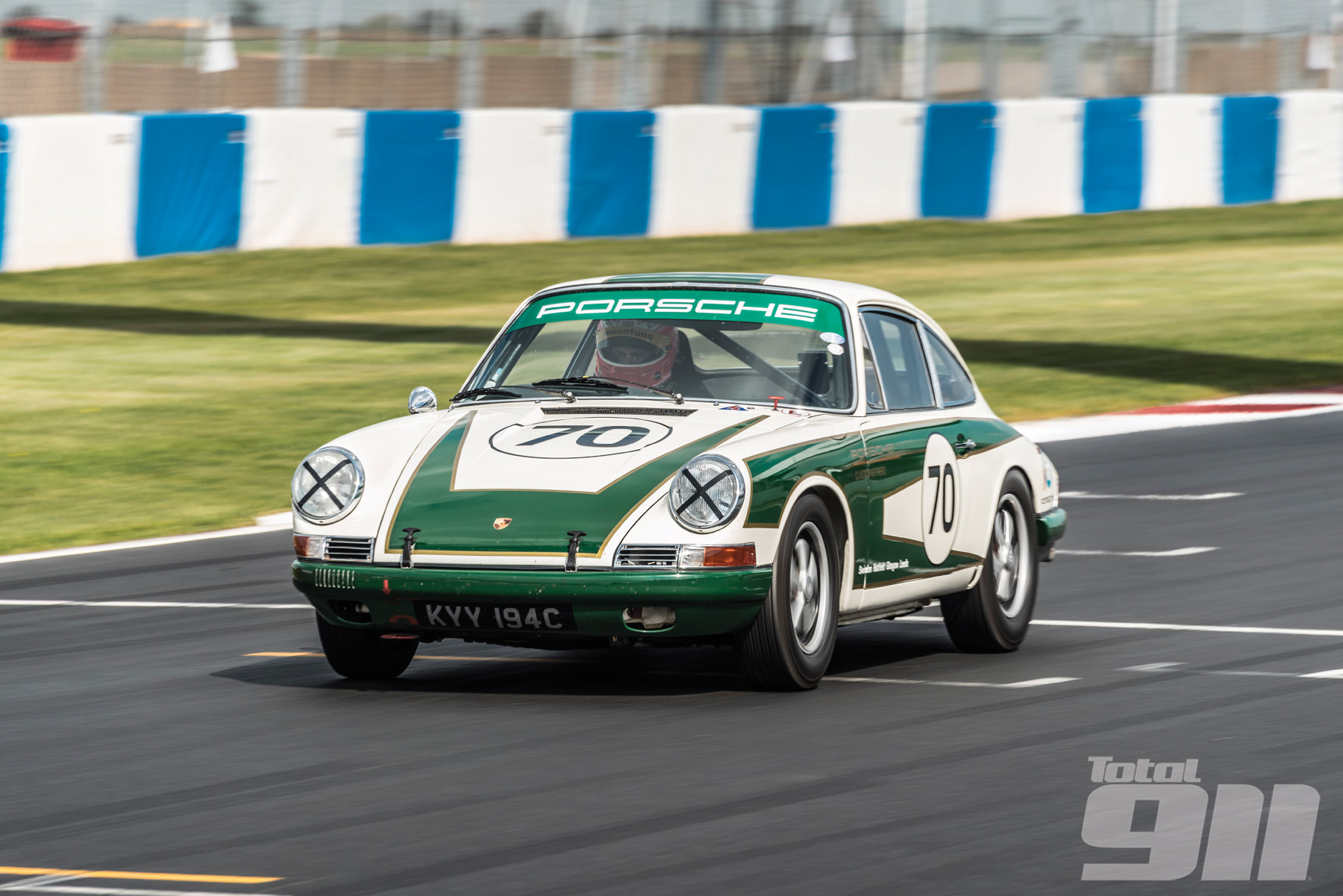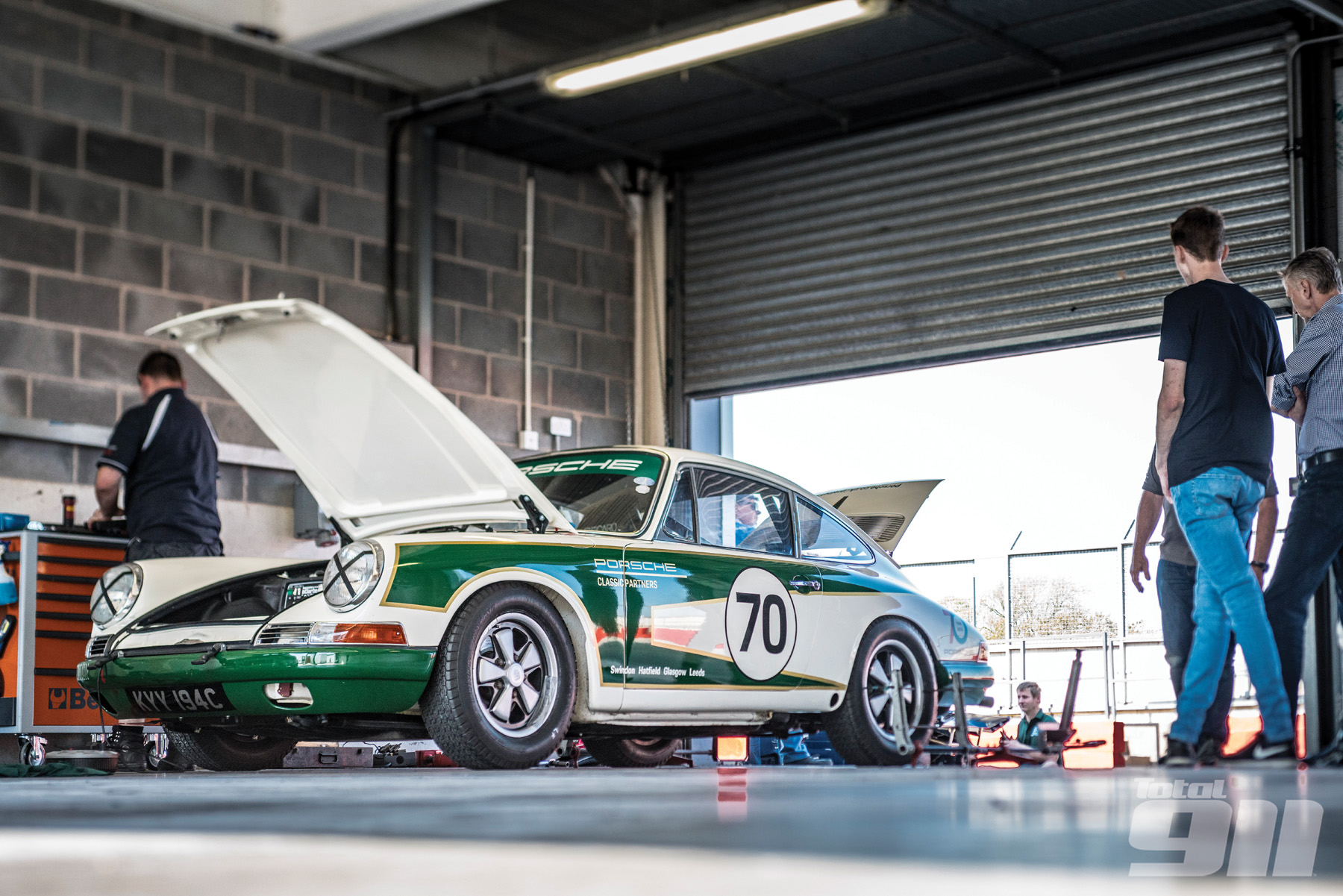2.0L Cup: the power of analogue
The sun is piercingly bright, blazing down from a cloudless blue sky. After a long winter of cruel wind and rain, the day is beautiful and the warmth on the skin is very welcome. There’s a backing soundtrack of high-revving racing engines, and the aroma of race fuel is in the air. Yet this is not Le Castellet or Dijon in July. This is Donington Park and an unsilenced test day, surrounded by beautiful, historically significant racing machinery far from that pre-hybrid era of motorsport.
We’re here to take a closer look at one of the most talked-about new series in Porsche racing circles in years: the Peter Auto 2.0L Cup. The fact this series involves cars all more than 50 years old, rather than showcasing modern technology, is testament to the current momentum of historic motorsport. There is a wave of affection and a love of yesteryear that has helped bring back an era of racing when cars moved around and oversteer was the best way forward.

Peter Auto has become synonymous with historic racing in Europe. The skilful combination of beautiful cars, sensible regulations and iconic race circuits attracts drivers across the entire spectrum and value of historic racing. Owners of classic pre-1966 short-wheelbase Porsche 911s have long been a familiar sight on the grids at Europe’s iconic race circuits. Generally further back down the often-packed grids, these small capacity 911s enjoy fierce battles among each other as well as occasionally embarrassing machinery with far higher capacity and power, using driver talent and the agility of the Porsche chassis to punch above its weight.
This popularity of the 911 in historic racing motivated several within the sport to create a series solely for this particular model of pre 1966 short wheelbase Porsche 911. Patrick Peter, founder of Peter Auto, together with motorsport specialists James Turner and Lee Maxted-Page, joined forces and discussed what was needed to create a series with as level a playing field as possible to enable owners of these early 911s to race for outright victory, not merely a class win.

This resulted in the largest ever database of early 911s being compiled to regulate this new series and attract drivers from across Europe. Today at Donington, we’re chatting with Phil Hindley of Porsche specialists Tech9 as they prepare this particular 2.0 911 ahead of the first round at Spa.
Phil is here today to shake down this beautiful, historic 911 2.0 racing car. Just two weeks later, he’ll be plunging down into Eau Rouge as the first round of the Peter Auto Porsche 2.0L Cup series kicks off (see report on page 10). We’re here to chat in between runs about this series, find out what’s needed to race competitively in FIA-approved historic Porsche racing and what tempted Phil back into the racing seat once again in a £250,000 early 911.
“I’ve always enjoyed racing to win – from the front and not just for a class victory,” Phil says. “It’s fair to say that these little 2.0 911s are great to drive, but in a grid full of Mustangs and E-Types ahead of them, they are the lowest powered cars out there. This Peter Auto series brings together everyone who loves racing these cars and levels the playing field. The attraction of being able to race a 2.0 911 to win outright is a huge attraction for the series.”
For the full feature on the Porsche 2.0L Cup, pick up your copy of Total 911 issue 167 in shops now or get it delivered to your door. You can also download the issue to any Apple or Android device. Don’t forget you can also subscribe to ensure you never miss and issue.

Comments (0)